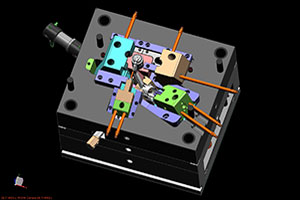 Your injection mold design will vary considerably based on the specifications, requirements, and use of the final product. Making sure it can create a suitable final product is what makes this part of the process so critical. Any mistakes with your injection mold design will appear in all of your final products so this stage is vitally important to get right.
Your injection mold design will vary considerably based on the specifications, requirements, and use of the final product. Making sure it can create a suitable final product is what makes this part of the process so critical. Any mistakes with your injection mold design will appear in all of your final products so this stage is vitally important to get right.
This is why many projects begin with a prototype. It gives you a chance to try the mold to ensure everything meets the specifications, as well as test the design. However, you need to know what kind of injection mold design and build will work first.
Single and Group Prototypes
You can have a single prototype designed to test. It can be made of different material than the final because its purpose is to have a final version of the product to test. If you would like to be able to try out several variations, you can have those differencse done in a group of prototypes. Of course, if you need several parts for an assembly you can also have a group of prototypes built so that you can try them out before producing multiple versions.
Production Molds
Naturally, the production molds are used to make the final parts and products. However, the molds are a little more complicated than that. There are a lot of specialty and niche molds that will require additional analysis and QA at the end. The following are the most common types of molds.
- The most common type are Insert molds. There are many different kinds and types, which means having to spend some time completing research before getting started to make sure you have the right insert.
- Internal and external thread molds can be incredibly difficult because parts on the inside of the product must align with the outside, with the most common form being prescription bottles. The lid and bottle must work together to keep the prescription secure from children, for example.
- Lost core molds are a special type that require a unique process because they cannot be made using conventional methods.
- Overmolds are used for a lot of different purposes. One of the most unique is overmold magnets, such as industrial pump impellers and detection floats, that require magnetic force to operate.
- Metal to plastic mold convertion create the same parts, but plastic instead of metal. This is very common in the aviation and vehicle sectors, but have larger industrial applications
Our 25,000 square foot facility is located in Mishawaka Indiana and here is where we build molds ranging from simple prototypes to complex production molds and servicing presses up to 500 tons. We have cross-functional teams of designers, engineers, and mold makers who strive to build mold that are capable of producing production-ready parts the first time. We have the reputation for developing complex tools that require industry expertise from conception to finish. We are happy to repair and make changes on all molds, including those designed and built elsewhere.
Topics: Injection Mold Design

